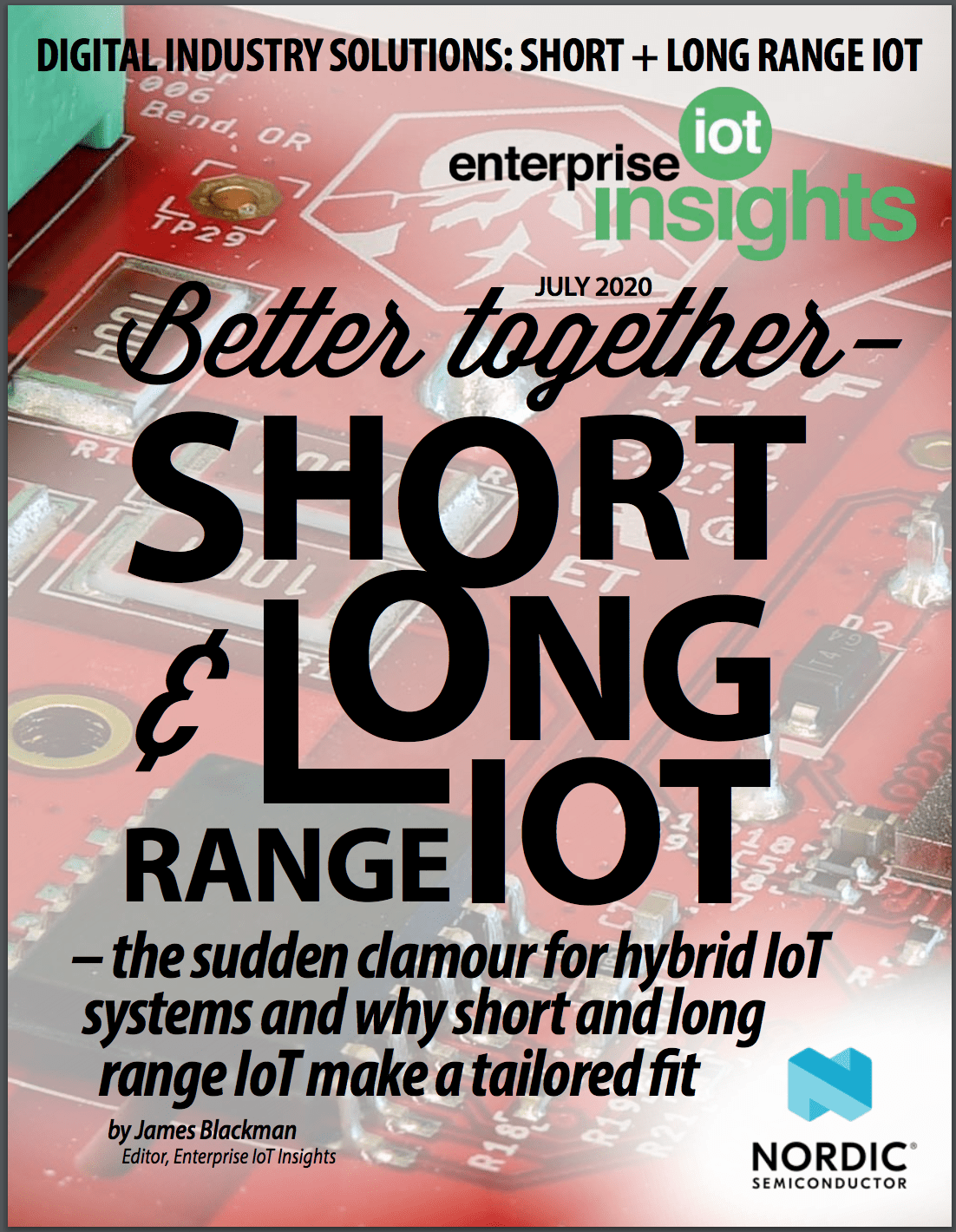Note, this article is taken from a new Enterprise IoT Insights editorial report on the combination of low-power short- and long-range communications technologies in hybrid IoT systems. Go here for the full report, which is free to download. A webinar on the same subject, with panellists from ABI Research, the Bluetooth SIG, Nordic Semiconductor, Sigfox, and The Things Network, is available here.
Much of the industry appears to have shifted to the perspective that multiple connectivity options will be needed, and that many are complementary. There are a number of examples of this new industry love-in, where sometime-rivals are apparently reconciled in pursuit of new hybrid IoT use cases.
But the standard model is where short-range IEEE 802.15.4 based technologies like Bluetooth and Zigbee are employed in busy sensor local networks, and longer range connectivity technologies, whether LTE or 5G, or lower-power wide-area tech like NB-IoT and LoRaWAN, are used for the backhaul.
In the end, the best marriage of IoT connectivity types is between these sorts of short and long-range suitors. That rapport is based on fundamental physics, with wide area technologies occupying sub-GHz spectrum and short-range technologies like Bluetooth, Zigbee, and Wi-Fi using the 2.4-GHz band. Their frequency separation means they dovetail nicely in IoT systems.
Already, certain industrial sectors (‘verticals’) are making use of combined solutions. Enterprise IoT Insights asked Phil Skipper, global head of IoT business development at Vodafone, and Mattias Lange, general manager for connectivity at Texas Instruments, to pick their prime use cases for hybrid IoT, for a new report on the subject (see link at top).
Separately, they listed a bunch, including agricultural automation, medical devices, and gateway-tethered consumer IoT devices. But for the purpose of top-five style journalism, we present five of their other picks, which encapsulate the momentum behind this trend for hybrid IoT solutions. Here they are, with quotes from the pair.
1 | ENERGY & GRID
Lange at Texas Instruments: “Smart grid applications can use connectivity technologies such as Zigbee and Wi-Fi for real-time communication and data transfer within homes and buildings. These applications can also use LPWA networks with the grid infrastructure, which allows for energy prices regulation based on certain criteria, and consumers to use electricity, accordingly.”
2 | CITIES & LIGHTING
Lange at Texas Instruments: “Smart city applications use LPWA networks for commands and reporting via small messages to local control hubs; lighting systems use short-range mesh technology for control and feedback based on those commands.”
3 | REMOTE INDUSTRY
Skipper at Vodafone: “Industrial sites, especially those with a large footprint like docks and petrochemical plants. There you need to support a wide range of in- or on-machine sensors over which there is little control, and then support these within a single factory network, for instance using a mobile private network.”
4 | GLOBAL LOGISTICS
Skipper at Vodafone: “Logistics and workforce automation is another case, and this is one that is changing quickly. Typically, there would be a gateway – a handheld device, for example – which would use RFID technology to read parcels. With the advances of iSIM, each package can now be individually tracked. An example is the smart Vodafone has recently announced, which we developed with our partners using NB-IoT.”
5 | FLEET MANAGEMENT
Lange at Texas Instruments: “This is an application where there can be short-range wireless technologies allowing vehicles sub-systems to work with each other, as well as infotainment systems, including Bluetooth Low Energy and Wi-Fi. Wide-area technologies can be used for predictive maintenance and optimizing fleet usage.”
Skipper at Vodafone: “Aftermarket automotive and fleet products [employ] a telematics gateway which may communicate with a number of low cost, low power devices around the vehicles – such as a dash cam or a windscreen token. With the adoption of car sharing then the combination of the two provides not only flexibility, but also a back-up, for instance to send NFD token to a phone that can then be used to open a lock.”
Note, this article is taken from a new Enterprise IoT Insights editorial report on the combination of low-power short- and long-range communications technologies in hybrid IoT systems. Go here for the full report, which is free to download. A webinar on the same subject, with panellists from ABI Research, the Bluetooth SIG, Nordic Semiconductor, Sigfox, and The Things Network, is available here.


